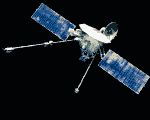
A - NORMAL MANEUVER
(1) The International Regulations for Preventing Collisions at Sea signals.ONE SHORT BLAST: I am altering my course to starboard.
TWO SHORT BLASTS: I am altering my course to Port.
THREE SHORT BLASTS: I am operating astern propulsion.
(2) The signal 5 or 6 short blast repeated several times at short intervals to say: I am reducing speed and may have to stop or make fast.
At night besides the blasts, four to five long flashes with the Aldis lamp or signal mast lamp.
(3) The signal one prolonged blast to attract attention. The expression "short blast" means a blast of about 1 second duration.
the expression "prolonged blast" means a blast of 4 to 6 second duration.
B - OBSTRUCTION IN CHANNEL IN ALL CIRCUMSTANCES
A vessel which under any circumstance cause or finds obstruction in the Channel must right away warn the vessels in the vicinity. That warning is given by whistle or siren:4 LONG BLASTS meaning "The channel is not free".
That warning must be repeated every 3 minutes until vessels concerned have answered in the same manner. As soon as they hear the signal mentioned above, the vessels take steps to stop and instruct for Radio Watch, to receive a full detail of the alert given by the vessel that sent the said signal.
The vessel should maintain Radio Watch until otherwise advised.
C - SHIP FAILURE (TO DREDGERS)
In case of engine or steering failure making the vessel not under command, while approaching a dredger, the vessel has to give the signal: ONE LONG BLAST FOLLOWED BY TWO SHORT BLASTS (_..).
D - VESSEL MOORING VOLUNTARILY DURING FOG OR SAND STORM
During the mooring maneuver, the vessel sounds every 2 minutes a series of 6 short blasts.Once made fast (Signal No. 33 " G.V. " hoisted), the vessel must ring rapidly the bell for 5 second at intervals not exceeding one minute. For vessels of 100 meters and over, they will have to ring the bell forward and in addition a gong aft, at intervals not exceeding one minute (a gong or any other instrument whose tone and sound will be different to that of the bell forward).
These signals are stopped when the vessel is told that all vessels concerned have been notified of her mooring.
E - VESSEL AGROUND OR ACROSS
See Art. 92 B - Obstruction in channel.
F - BETWEEN VESSELS AND TUGS
(1) Vessels aground in the Canal:Between a vessel aground in the Canal and tug.
These signals are for maneuver of re-floating, as long as the vessel has one of the grounding signals:
- PULL SLOWLY ( _. )
- INCREASE ( _..)
- STOP ( _ _ )
- SLACK THE LINE ( _ _ . )
- I AM GOING TO LET GO ( _ _ . . )
These signals are to be repeated by the tug.
(2) Vessel towed in the Canal:
Between a vessel towed in the Canal and a tug.
Radiotelephony is used as communication between ship and tug, beside the following signals:
- SLOW SPEED: By Day (flag A hoisted above bridge) At Night (sound _ . ).
- HALF SPEED: By Day (flag A hoisted half away), At Night (sound _ . . ).
- NORMAL TOW: By Day (flag A hoisted right up), At Night (sound _ . . . ).
- STEADY: By Day (flag A lowered), At Night (sound _ _ ). Or sound signals if considered surer.
- The sound signals are to be repeated by the tug.
- The flag signal remains flying as long as the tug is to give the signaled speed.
- By day, every change of flag signals is followed by a long blast.
G - SIGNALS BETWEEN Very Large Crude Carrier Ships AND ESCORT TUGS
(1) Attention to start maneuver:several prolonged blasts given by the ship.
(2) Stern tug:
- BRING MY STERN TO STARBOARD ( . ).
- BRING MY STERN TO PORT ( . . ).
- KEEP MY STERN IN THE AXIS ( . . . ).
- PULL MY STERN AFT SLOWLY ( . . . . ).
- INCREASE PULLING MY STERN ( . . . . _ ).
- UP TO HALF SPEED ASTERN ( . . . . . ).
- INCREASE PULLING MY STERN ( . . . . . _ ).
- UP TO FULL SPEED ASTERN ( . . . . . . ).
- STOP PULLING (VERY LONG BLAST ______ ).
(3) Forward tug:
- GIVE ME A PUSH ON STARBOARD BOW ( _ ).
- GIVE ME A PUSH ON PORT BOW ( _ _ ).
- STOP PUSHING ( _ _ _ ).
